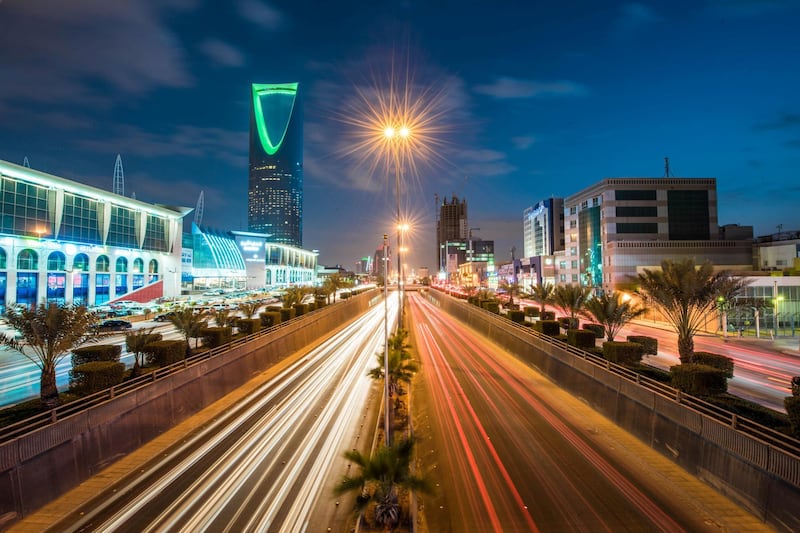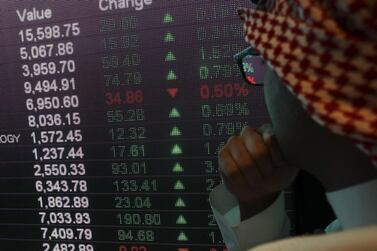Private sector borrowing in Saudi Arabia rose 7.6 per cent year-on-year in December - the highest monthly rate in the past 3 years as funding costs dipped due to declining interest rates, according to Al Rajhi Capital.
A note issued by the bank on the kingdom’s economy showed that credit to public sector enterprises also grew 14.7 per cent year-on-year during the same period.
Credit to the ‘commerce’ and ‘others’ sectors increased 2 per cent and 14 per cent respectively, which was partially offset by falls in loans to the manufacturing and construction industries, which fell by 9.3 per cent and 4.6 per cent year-on-year, respectively.
Meanwhile, deposits grew 7.3 per cent, driven by both businesses and individuals.
Banking sector profits jumped 7.4 per cent in December to stand at 4.05 billion riyals (Dh3.96bn).
“The cumulative banking sector profits for the year increased 4.8 per cent year-on-year as of December to stand at 50.46bn riyals.” the report said.
Saudi Arabia's lenders National Commercial Bank (NCB) and Riyad bank recently reported higher full-year profits as operating income rose.
NCB's full-year profit climbed 19 per cent to 11.4bn riyals, while Riyad bank's profit was up 81 per cent to 5.6bn riyals.
Point of sale (PoS) transactions, on the other hand, continued to grow 25.1 per cent year-on-year in December, largely due to growth in ‘restaurants and hotels’, ‘beverages’ and ‘transportation’ segments.
“Higher digital spending suggests that consumer spending is rising and should contribute to the overall economic growth,” Al Rajhi Capital said.
The Real Estate Price Index also edged up 0.5 per cent, supported by higher residential property prices.
“We believe that higher credit from banks along with likely pick-up in government spending should support the non-oil economic growth of the kingdom. This is expected to somewhat offset the impact on [the] oil economy due to ongoing oil production cuts.”
The latest data released by SAMA (Saudi Arabian Monetary Authority) indicates that the money supply in the kingdom continued to grow in December at 7.1 per cent, owing to a busier mortgage market and the Saudi Aramco IPO.
Foreign exchange reserves increased in December after declining for four consecutive months to stand at 1.87bn riyals.
Remittances from Saudi nationals increased 9.5 per cent, while remittances from non-Saudi nationals rose 2.2 per cent year-on-year in December.
Moreover, after remaining in the deflationary zone for 11 bconsecutive months, inflation turned positive in the month of December.
The report also reiterated the kingdom’s energy minister Prince Abdulaziz bin Salman’s outlook that the possible impact of the coronavirus on global oil demand is expected to be minimal.
Saudi Arabia’s gross domestic product is expected to strengthen during 2020 and 2021 to 2.2 per cent and 2.4 per cent respectively, according to the World Bank. However, these estimates are revised from the earlier expectations of 3.1 per cent in 2020 and 2.3 per cent in 2021.







